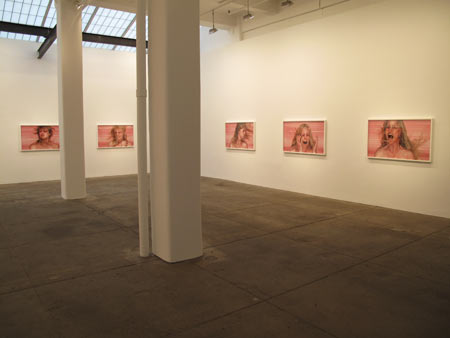Review: Rosemary Laing at Galerie Lelong
 I know a lot of photography, but, thankfully, there is a lot to still be discovered, and I treasure those moments when I stumble upon something new and exciting at a gallery.
I know a lot of photography, but, thankfully, there is a lot to still be discovered, and I treasure those moments when I stumble upon something new and exciting at a gallery.
I will admit that that is not my original motivation for seeing Rosemary Laing at Galerie Lelong, though. When looking for galleries to visit I came across the press release of that show, and I was immensely fascinated by the sheer amount of intellectual gibberish and outright nonsense I ran into. Maybe this is all part of an unspoken agreement between gallerists and art critics: “We write about ‘the Brechtian sense of high drama and heightened awareness of artificiality’, and you then write a review that talks about the ‘sublime’ and ‘uncanny’”. Who knows?
The sheer ludicrousness of this has an effect on the artists, though. More precisely, it has an effect on the way they and their art are perceived, and that is unfortunate. But then many people never read press releases and ignore the sheets handed out at galleries, so maybe it’s not as bad as I make it sound. Regardless, I went to see this show expecting a real train wreck (based on the press release), and I was extremely pleasantly surprised by how good the show was (and still is - it’s up until June 20th)
Entitled “a dozen useless actions for grieving blondes”, the show presents 12 fairly large images of blond women in various states of emotional distress (it’s three different women if memory serves me right). Of course, “emotional distress” might immediately trigger memories of Jill Greenberg’s photos of crying babies. If you have seen those you owe it to yourself to see Rosemary Laing work: This is how you do this kind of work. Taking away lollipops from little kids and then Photoshopping the hell out of the images… No, not really.
As you might be able to see from the images online (at the time of this writing, the first images here are those in the show), the images look intense, but you can really only experience them when seeing them at the gallery (online, I’m sure, they might strike some viewers as contrived). And “experience” is the right word. The emotional distress translates very well from the images to the viewer.